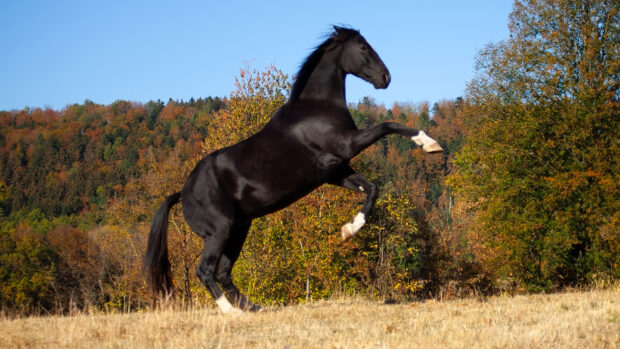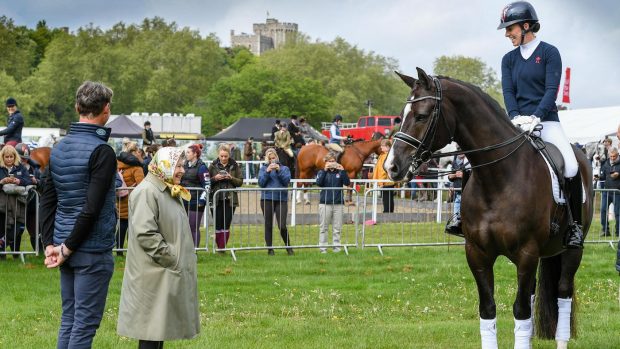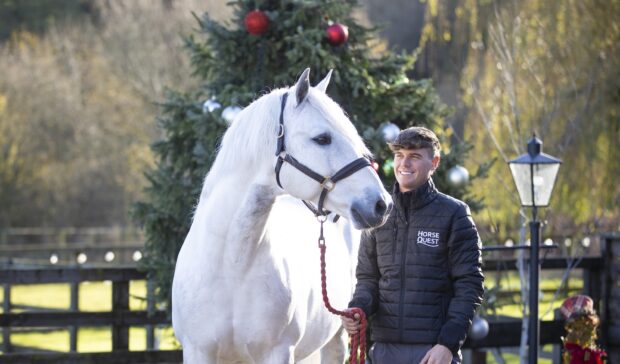A few years ago, H&H spent a day at Pippa Funnell’s yard watching her train six young riders who were on the Wesko Young Eventers’ Programme — part of the Wesko Equestrian Foundation — in a series of sessions using showjumps and simulated cross-country fences.
The tips shared by the 2019 Burghley winner are as relevant today as they were then, so if you’re looking for some training inspiration, we are here to help.
1. Pippa does a lot of her flatwork in a jumping saddle — “I like to do everything to get the horses’ backs up and the emphasis should be on flatwork for all three phases. It’s easy to get too ‘dressage’ but it’s about the horses thinking for themselves, footwork and balance. When they go jumping, people forget about their own discipline, for example good transitions and sticking to lines.”
2. She isn’t worried if a horse has a few funny jumps in training, perhaps because they are taking off from quite a deep spot. “It doesn’t have to be pretty all the time and I’m not worried if he has to sort himself out.”
3. She uses a lot of small fences even with experienced horses — for example, Burghley winner MGH Grafton Street had a jumping session while H&H was at the yard during which most of the fences were less than two foot high for the majority of the time.
4. Pippa suggests a useful exercise for riding in rhythm and not looking for a stride is to look at the line you want to take to a fence and then look away and approach the jump without looking at it.
5. Horses have to go when you say go. Make sure there is enough difference when you make transitions within the pace.
6. A good jumping session can count as a fitness workout. Each horse would keep going round jumping different fences in trot and/or canter as appropriate to their level of training for anything up to four or five minutes.
7. Focus on the basics — in no particular order: suppleness, straightness, rhythm, acceptance of the aids, self-carriage, impulsion, discipline, rider position and balance.
8. Your most important tool across country is your eyes. Train your eyes to look to the next fence and the horse has to follow; you can steer with your eyes while channelling the horse’s eyes with your legs.
9. Remember when riding cross-country not to turn too early to a combination — wait until you can see your line through it to ensure you are straight.
10. Pippa recommends doing a lot in trot over narrow fences or difficult lines. This gives the horses time to think about their footwork and teaches them to think about it. Give a young horse time to look at fences, but without coming behind the leg. Don’t use speed to get over the fences or you cannot control the horse’s straightness. You can’t be in a hurry with young horses.
11. If a young horse throws a funny jump, it doesn’t matter if the rider gets left behind, but it’s important not to catch them in the mouth.
12. Pippa sets up lines at home without particular distances. “There is uncertainly in cross-country if a horse stumbles or makes a funny jump over a ditch or whatever. The horse has got to use their brains and footwork. People go wrong because training is too structured. They lose an element of horsemanship where they have to react. Cross-country isn’t always tidy, you have to get used to it being ugly sometimes. It’s important to put ourselves in a position where you don’t know what the distance is so we have that ability to deal with what the sport throws at you.”
13. Pippa believes riders stop too quickly once they have a horse doing something right. For example, if a horse doesn’t want to go into the wash box, they will then take him in and out 10 or 15 times, until he is going in calmly. “You don’t just get him in once and stop,” she says. “Similarly if a horse doesn’t want to go into water cross-country schooling and then leaps in, we repeat it until he’s going in without any fuss. There is no sense of urgency.”
- To stay up to date with all the breaking news from major shows throughout 2025, subscribe to the Horse & Hound website
You may also be interested in:

William and Pippa Funnell’s top tips for producing young showjumpers
William and Pippa Funnell give their top tips on producing a youngster for showjumping

16 pearls of wisdom from top British rider Tina Cook
The former European champion on taking her time, ex-racehorses and why horses trip

Subscribe to Horse & Hound magazine today – and enjoy unlimited website access all year round




